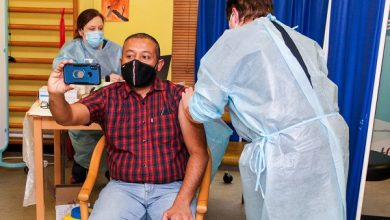New series: ‘How to deal with the current crisis’

Over the next few weeks the HSE Psychology services for Galway, Mayo and Roscommon will be streamlining some key information for viewers of Boyletoday.com based on the evidence of what works in similar circumstances. Our themes will be around building resilience, coping with cocooning, managing relationships, caring for those with disabilities and other vulnerabilities and sharing supports for those who are ill or bereaved.
We have come so far and we truly are ‘In this Together’. Well done everyone – together we can ‘keep on keeping on’
For Week One we are highlighting:
1. Compassion Focussed Therapy (CFT)
Compassion Focussed therapy (CFT) has evolved from UK psychology Professor Paul Gilbert’s studies of how our brains manage emotions. Gilbert describes three systems that we all use to regulate our emotions: Threat, Drive and Soothe. (Pic.1)
Threat: When we are in the Threat system it may be because of a physical threat e.g. immediate danger or illness or it may be a psychological threat because we may be judging ourselves or others in a critical way. No matter whether the threat is about a real and present danger or due to our internal thinking, we may experience any of the bodily symptoms of stress such as rapid heart rate, rapid breathing or muscle tension. These are normal physical reactions and a sign that we are feeling under threat. We can all recall how watching the news in the early days of COVID cases in Ireland was likely to leave us feeling tense and stressed in our bodies.
We are all facing the threat of the COVID virus as well as the related practical, financial or emotional challenges. As each person is an individual we will respond differently to the same threat. Some may experience less threat while others may have additional stresses already in their lives which increase the level of Threat.
If you were to draw a triangle with a red circle to represent your Threat levels now, how large would it be? Has it been increasing and decreasing in force through the day or over time?
Drive: Our Drive system can be used to help us cope with Threat by leading us to consider ways to reduce the threat. So with the COVID outbreak our leaders and health services went into urgent ‘Drive’ to work out the actions and plans for the country. Throughout the country, we also went into Drive mode and took on board the social distancing and the safe hygiene messages. We started planning our shopping and sought ways to reduce risk as best we could. Sometimes though, when the Threat is psychological such as ‘What will happen if I get really sick?’, we cannot regulate our Drive system and get rid of the threatening thought. Over-thinking our worries can lead us into a spin of ‘Overdrive’ to combat the threat. When we are in overdrive we might be endlessly scrubbing down everything, eating or drinking too much or too little, neglecting our self-care, over-exercising, over-working or withdrawing into extreme avoidance.
If you were to draw a blue Drive circle on the triangle to describe how much you are in Drive at present what size would it be and does it change over time?
Soothe: Fortunately for us there is a good antidote to Threat and Overdrive – we have a soothing system. Most people have developed helpful coping strategies through life and can call on these when they are feeling under threat, but for all of us, when the threat is very high we may need to work on our Soothing system to make it strong enough to challenge the Threat.
When a threat is physical – e.g. if we are about to be hit by a bus, or if there is a virus, there are clear things we can do: run out of the way of the bus or take actions to help fight the virus. We all have this ‘fight or flight’ instinct and we are all here today because our ancestors right back to the start of humanity had the wit to run or fight as needed to deal with the physical threat.
But what if the Threat is our fear and our thoughts? These are psychological threats and are often harder to manage. “What if I/my elderly parents/my child catch COVID?” “What if I get really ill with it?” Our minds can race forward worrying about the future.”Everyone else is cooking/gardening/exercising/
In Compassionate Mind Therapy, Professor Gilbert invites us to increase the power of our Soothing System by developing compassion for ourselves and others and using mindfulness to stay in the present moment. So while Threat involves being critical and judgemental of ourselves and others, when we are in Soothe we need to ditch the criticism. Gilbert helps us to realise that as humans we have ‘Tricky’ creative brains that imagine all sorts of things. Since we did not get to choose our genes, our parents or our early childhood experiences we need to be compassionate with ourselves. The key mantra in CFT is –
“It’s not my fault, but it is my responsibility”. Paul Gilbert.
So we are all doing the best we can given our genetic makeup and our personal histories. If however, we are doing things that are harmful to others or to ourselves, then we have to take responsibility to alleviate the distress. So Compassion is not just about seeing that someone is suffering, it is a wish to alleviate the suffering (whether this is suffering in ourselves or others).
If we need to enhance our Soothing system how do we ditch the criticism? Rather than judging ourselves and others we need to talk more compassionately to ourselves: e.g. “I am doing the best I can”; “Everyone is different”; “We all can have good days and bad days”; “Everyone is influenced by their life experiences” etc. There are plenty of people who do things that make us angry and who we criticise. Compassion is not about letting people away with wrong-doing, it is about understanding that “It is not their fault (that they are operating the way they do) but it is their responsibility to do things differently if they are harming themselves or others”. We also need to apply this to ourselves. So giving yourself a break is going to be important in starting to be compassionate to yourself.
The secret with managing our worries compassionately is to use some mindfulness ideas and bring our attention back into the present moment. Allow our thoughts to ‘just be there’ and practice not judging them as right or wrong. Then allow thoughts to pass as if we are watching them passing like a train going by, rather than being controlled by them. (Pic.2)
So bring our attention to the present moment “I am sitting in my room, I am well in this moment”. Look at what you can see, hear, feel, taste and smell. Just be present
The present is a gift you give yourself.
If you were to draw a Green Circle on the triangle to represent how strong your Soothing system is at present how large would it be? If you have drawn the three circles for Threat, Drive and Soothe, which one is strongest at the moment and do you need to strengthen your Soothing circle?
2.Practical steps to manage COVID related Stress
An essential aid to building resilience during COVID -19 is to understand that people may experience a wide range of reactions to the crisis and these reactions are normal. Not everyone will experience things in the same way. It is the uncertainty and absence of control that generates fear. Our responses are a normal reaction to something we are not used to.
You may notice some of the following:
- Feeling on edge more than you are accustomed to.
- Fearing that normal aches and pains might be the virus and checking for symptoms
- Becoming irritable more easily.
- You may feel insecure.
- Have difficulties sleeping.
- Find it difficult to stop thinking of the worst case scenarioThese are normal reactions. In time it will pass.How to manage worry
1. Social Media and Facts: Keep in mind that a lot of what is on social media is opinion and not fact. On social media, people may be talking about their worries and beliefs – you do not need to make them yours. Too much time on social media may only be increasing worries; you could consider limiting social media usage and just check the HSE websites for information.
When we are worried, we can often focus on worst case scenarios: it is best to focus on facts. If you are concerned about something, it is best to check to see if it is factual. Fear can be very contagious so the challenge is to get a balanced view
2. Managing what is within our control: Feeling worried is a normal reaction to something that feels threatening. We are hu.man beings and, when we feel under threat, our survival instincts kick in so we might spend time thinking about dangers. The key is to accept these thoughts as a normal response and let them pass.
If it becomes necessary, making a plan to prepare for the needs of our families will help us to ‘park’ the worries and get back to what we are doing in the present moment.
When advised by the HSE, taking any necessary steps will help us to feel responsible and more in control. We will know that we are doing our best to look after ourselves, our families and friends, and our community.
3.Take a Breath: Practicing a breathing exercise will help to soothe the body and become more settled. (Pic.3)
Try this ‘Tension Down’ exercise: stand or sit with feet firmly on the floor. Inhale through the nose and, as you do, notice any tension you have in your body. Imagine that you are ‘picking up this tension’ as you breathe in. Exhale through your nose and slowly breathe out saying ‘tension down’. Imagine the tension flowing down through your body, through your feet, out of the room and far away. You can repeat the ‘Tension Down’ exercise once or twice at a time and then return to your normal breath. Any time you notice yourself becoming tense, repeat the exercise.
4.Staying in the present moment: What do you normally do for relaxation? If possible, it would be good to do the things that help you relax (e.g. walk, read a book). If you have experience of mindfulness, yoga or pilates, these can be used to help relax the body. Mindfulness simply means focusing closely on the present moment – ten minutes of mindful attention to the present moment using all of your senses has been found to be very beneficial.
5. Keeping routines and good self-care:
- It is best to maintain a regular daily routine and build structure in your life as far as possible. Some days your routine may be out of sync, but give yourself some flexibility and then try to get back into routine again.
- It is best to talk about concerns to family or friends.
- Try to avoid excess alcohol, recreational drugs, caffeine, nicotine.
- Aim to balance activity with rest.
- It is important to get enough sleep. Try to reduce screen-time before sleeping and wind-down with a gentle bed-time routine.
- Try to eat regular healthy meals.
- Regular exercise is so important for the body and mind.
- Try to find a way to engage in activities that are simply fun. Having a laugh is a proven antidote to stress.
6. Seek professional support if you feel that you are unable to manage: There are many services available for support which you can see in the links below. Your GP is available to help you and direct you to services that are appropriate/best for you.
Covid 19 – Remember the basics for keeping well
- Wash hands properly and regularly.
- Cover your mouth and nose with a tissue or sleeve when coughing and sneezing.
- Put used tissues into a bin and wash hands.
- Avoid people who are coughing and sneezing, where possible.
- Clean and disinfect frequently touched objects and surfaces.
- Follow the recommended restrictions and advice from Public Health
Useful Links:
For all areas:
HSE Live /www.hse.ie
- www.yourmentalhealth.ie
- www.healthpromotion.ie
- www.healthyireland.ie
- www.stresscontrol.org For online Stress Control ClassesHSE, Health & Wellbeing are offering another opportunity to do a Stress Control Online programme commencing May 11th via www.stresscontrol.org This 3-week programme is free of charge to the public and delivered by Dr. Jim White, Consultant Clinical Psychologist, Stress Control Ltd. (Pic.4)





